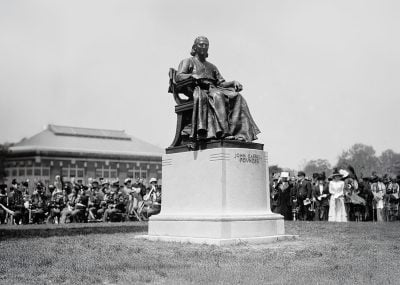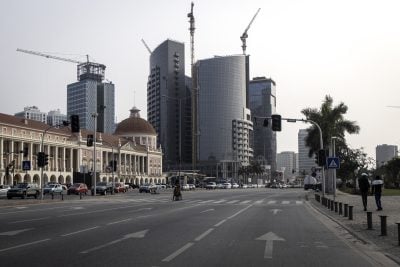This year marks 50 years of Kenya’s independence. These have been drama-filled years under three presidents with vastly differing styles of government. A new administration will take over later this year. What have these years been like and what does the future hold? Wanjohi Kabukuru takes a rapid trip down memory lane.
Mzee Jomo Kenyatta:
The golden years
At the core of Kenya’s independence struggle, which included the bloody Mau Mau resistance, were demands for access to land, equal opportunities for all, the right to own property and freedom of movement and self-determination.
Right from the moment that Kenya achieved its independence in 1963, Jomo Kenyatta, Kenya’s founding father, adopted an economic policy that favoured a free market system dressed in African socialism. Even though independence had come, Kenyatta had pledged to pursue reconciliation with the colonial government and encouraged settlers and missionaries who had made Kenya their home to remain. This approach saw Kenya retaining the key economic traits laid down by the British in agriculture, production and education.
Kenya’s economic policy was driven by Sessional Paper No. 10 of 1965, whose hallmarks were equity, property ownership, democracy and basic freedoms. The British colonial government had primed Kenya as an agricultural economy with tourism on the side. This premise saw Kenya’s arable land being zoned for coffee, sisal, cut flowers, tea, cotton, pyrethrum and subsistence crops like maize, beans and wheat. Livestock for both dairy and beef was also clustered in this. Between 1963 and 1973, Kenya’s economy grew at an average real growth rate of 5%, and from 1973 to 1980 at 8%.
Kenyatta started off pretty well and in his time the Kenyan economy showed more promise than that of the Asian Tigers. It is during Kenyatta’s presidency that Kenya became a leading global producer of pyrethrum, sisal, tea and coffee.
Also, earlier in his presidency Kenyatta played a crucial role in the setting up of the regional economic bloc, the East African Community (EAC), which was founded in 1967. However, in 1977 divergent political ideologies, economic policy differences and open hostility among key ministers in the three governments saw the EAC collapsing. The collapse of the EAC was a painful economic lesson as these countries would come to realise in the future.
While Kenyatta had boosted what the colonial government had initiated in terms of expanding agriculture, his government fared badly in equity and addressing historical injustices. Kenyatta’s 15 years were marred by several political assassinations of high-profile individuals with great national influence. Preferential treatment to members of his inner court was also one of the dark moments of Kenya’s formative years.
Daniel arap Moi:
The lost decades
As he took over the reins of power, Moi sought to assuage Kenyatta’s coterie of advisers. He promised to pursue the same policies as Kenyatta. His Fuata Nyayo (Swahili for “following footsteps”) philosophy saw Moi also adopting a free-market policy that heavily favoured his close cronies. Just like Kenyatta before him, Moi stuck with an agricultural economy.
For the first three years of his presidency, the Kenyan economy was sound. However, after the abortive 1982 coup by non-commissioned officers of the Kenya Air Force (KAF), Moi’s government became jittery and paranoid. Constitutional amendments were made which constrained the public, muzzled the press and weakened the government‘s two other arms of judiciary and legislature. Without such checks and balances and much authority vested in the president, malfeasance blossomed. The once-vibrant Kenyan agricultural sector collapsed as political interference saw thriving farming cooperatives such as Kenya Farmers Association (KFA), the coffee milling giant, Kenya Planters Cooperative Union (KPCU) and milk processor Kenya Cooperative Creameries (KCC) among other profitable corporations being brought down by corruption. Agricultural growth fell from 5% in the 1970s to 1% in the 1990s. Employment in the agriculture sector fell from 87% in 1963 to 77% in the year 1999.
Between 1980 and 1990, Kenya’s economy stagnated, recording an average growth of 4%. From 1990 to 2000 it had shrunk to 2% and there was poor and ill-motivated tax collection. Bilateral partners and donors lost faith in Moi’s government as the economy was in recession. The shocker came in 1994 when the Kenyan shilling was devalued by 81%. What characterised the Moi administration was the wanton and indiscriminate sleaze that saw Kenya losing her famed economic status. The $1.1bn Goldenberg scandal only helped in alienating Kenyan further.
Under Moi, the economy deteriorated and almost collapsed. Kenya became poor. Fear of reprisals saw many academics fleeing and the brain drain saw the government lacking in ideas to stimulate a faltering economy that was the envy of many. The usual five-year development plans did little to excite investors.
Mwai Kibaki:
The economist takes over
Disenfranchised by President Moi and the ruling Kenya African National Union (KANU), a combined opposition defeated Moi’s chosen candidate, Uhuru Kenyatta, in the 2002 general elections and Mwai Kibaki was sworn in as Kenya’s third President. Kibaki, the economist and a key monetary policy bureaucrat in both the Kenyatta government with 10 years as President Moi’s Finance Minister, moved fast to resuscitate the struggling economy.
Kibaki’s first term in office was driven by the Economic Recovery Strategy for Wealth and Employment Creation 2003–2007 (ERS), a five-year economic revival blueprint. This was followed up by the setting up of the National Economic and Social Council (NESC) as the country’s top think-tank and adviser on economic matters in 2004. NESC was made up of top professionals drawn from academia and the corporate world.
In 2008 Kibaki launched the Kenya Vision 2030 as the framework defining Kenya’s development agenda for the next two decades. Vision 2030 replaced the usual five-year development plans and is anchored on prosperity and economic transformation of this East African powerhouse. The building blocks set by ERS and Vision 2030 have seen Kenya experiencing its highest growth rate in its 50 years. According to the World Bank, in 2003 Kenya’s GDP stood at $13.1bn. Ten years later, the GDP is now $33.6bn.
Interestingly, as Kenya marks its 50 years of independence, President Kibaki is also crowning his 50 years in elective politics with retirement.
Major infrastructure milestones marking Kibaki’s presidency include the $98m Olkaria 4 Geothermal power plant in Rift Valley, the $112.4m Thika Superhighway, $24.7bn Lamu Port South Sudan Ethiopia Transport (Lapsset) Corridor, the $413m Nairobi Urban Transport Infrastructure project (NUTRIP), $7bn Konza Technocity; massive expansion of Kenya international airports (JKIA, Kisumu International Airport and Moi International Airport), opening of the second container terminal at Mombasa, Syokimau Railway and four fibre-optic cables.
Even though agriculture remains the backbone, telecommunications, real estate, aviation and manufacturing have now become key drivers of the Kenyan economy. Kenya is today well known globally as an innovation hub boasting a mobile subscriber base of 29.2m and leading the world on mobile money, thanks to M-Pesa.
Kibaki is best remembered for pushing primary school enrollment from 5.9m pupils in 2002 to 9.5m in 2012 through free primary education. Owing to the intellectual freedom, free press and a working environment that values expertise, corporate leaders and hard-working civil service technocrats have emerged.
This list includes James Mwangi of Equity Bank, Vimal Shah of Bidco, Kenya Airways CEO Titus Naikuni, Mugo Kibati, director of Kenya Vision 2030, Meshack Kidenda, the Director General of Kenya National Highways Authority (KENHA) and Safaricoms’ former CEO Michael Joseph among others.
An expanded EAC, bringing Rwanda and Burundi into the fold in 2007, has further boosted Kenya’s intra-regional trade and economic standing. Kenya’s exports to the EAC region now stand at $1.12bn and have surpassed the European market, which was traditionally its largest export market.
But while Kibaki scored high marks on the economy, his administration scored poorly in cementing a cohesive society and bridging the poverty gap. The events of 2007’s disputed polls, which saw the country sliding back from its economic progress, are yet to be fully addressed.
The next 50 years
Kenya’s next 50 years will benefit heavily from the foundations set in the last decade and firmed up in 2010 by a new constitution, which has given massive powers to institutions rather than individuals. As Kenya moves towards its centennial celebration, the challenge is to foster a tolerant and more secure society.
The country is poised for an expanded economic portfolio thanks to the discovery of major oil and gas deposits in the Rift Valley and the Kenyan coastal regions respectively. The entry of Tullow, Anadarko, Cove Energy, First Australian Resources (FAR) Limited, Pancontinental and Total among others shows an economic boom long before 2030. With the passing of the Kenya Mineral and Mining Policy 2011, Kenya too is set to open up its mining industry covering gold, iron ore, titanium, coal and other precious stones.
Kenya’s real estate sector, acknowledged internationally by the Prime International Residential Index (PIRI), as the best-performing prime residential property market in the world, will also be a key feature in the coming 50 years. High-end luxurious residential homes like Mt Kenya Wildlife Estate, Mukima Ridge, Fourways Junction, English Marina, Shaza Estate, Migaa, Tatu City, Thika Golf Estate among others indicate a future of promise. Improved infrastructure will enhance more intra-regional trade and boost a robust service industry.
Away from economic transformation is the new socio-political-economic model set in the counties system, which will be replacing the colonial provincial administration scheme. Under the new Kenya’s administrative stations, there are 47 new counties as opposed to the original eight provinces in the past. 15% of the national budget will go to the county governments. Going by Kenya’s 2011/2012 budget, $1.72bn is supposed to be shared amongst 47 counties to spur development in the grass roots.
Want to continue reading? Subscribe today.
You've read all your free articles for this month! Subscribe now to enjoy full access to our content.
Digital Monthly
£8.00 / month
Receive full unlimited access to our articles, opinions, podcasts and more.
Digital Yearly
£70.00 / year
Our best value offer - save £26 and gain access to all of our digital content for an entire year!
 Sign in with Google
Sign in with Google 


